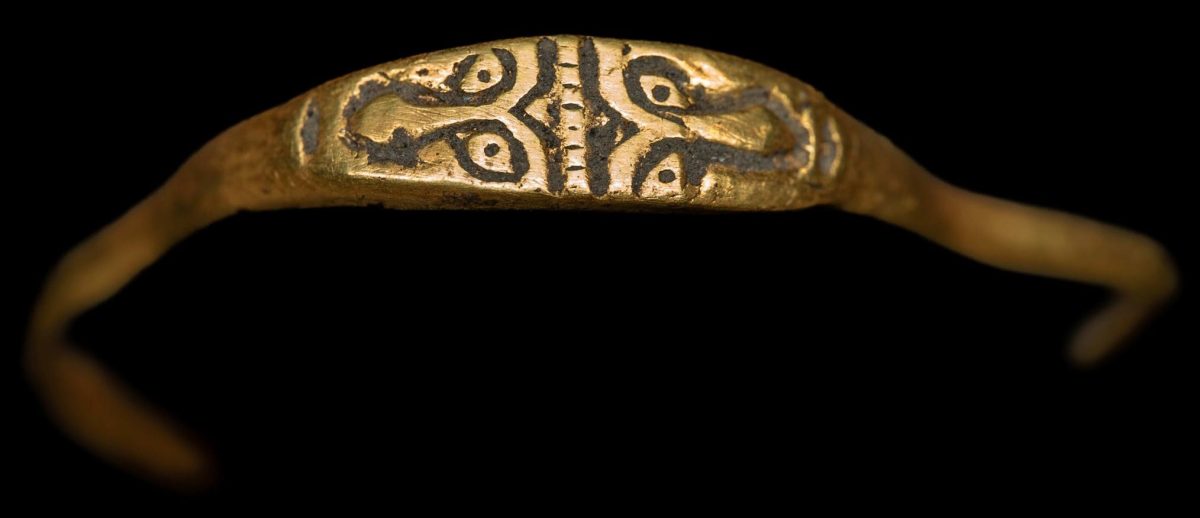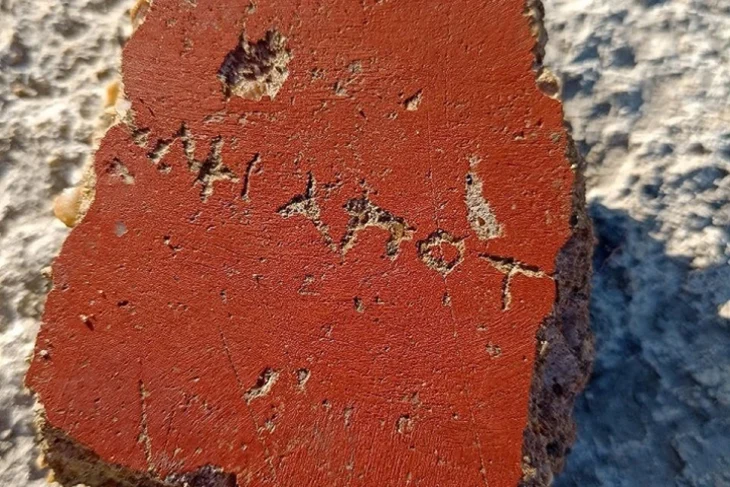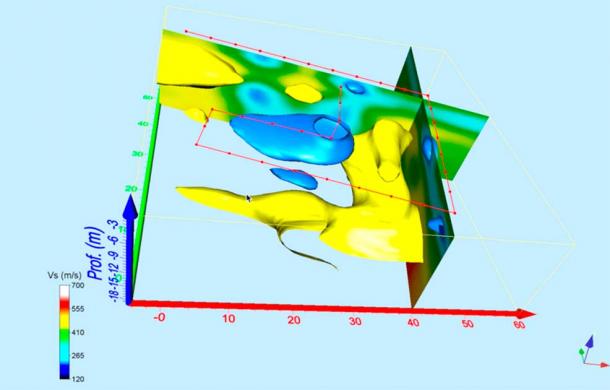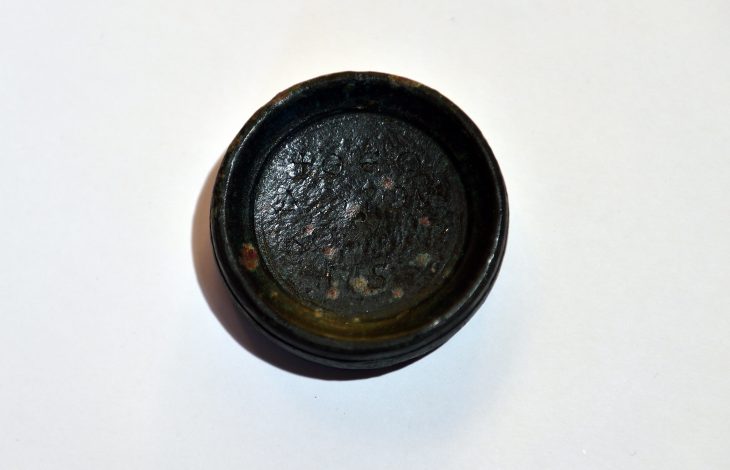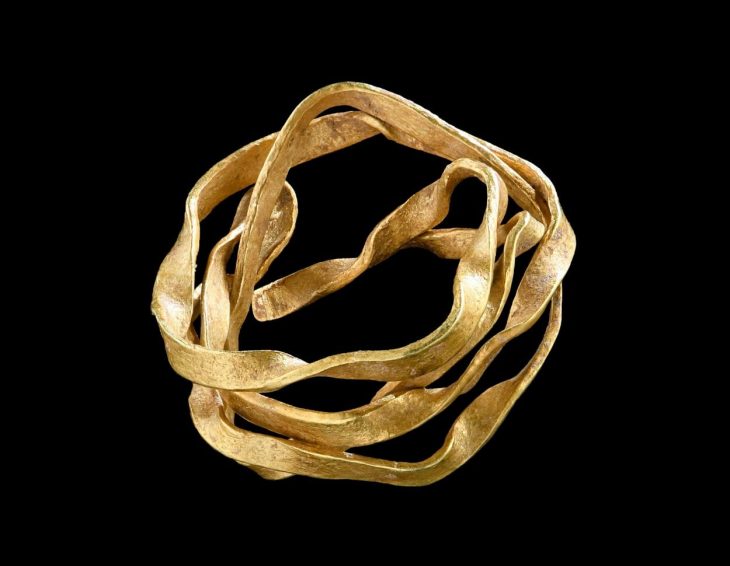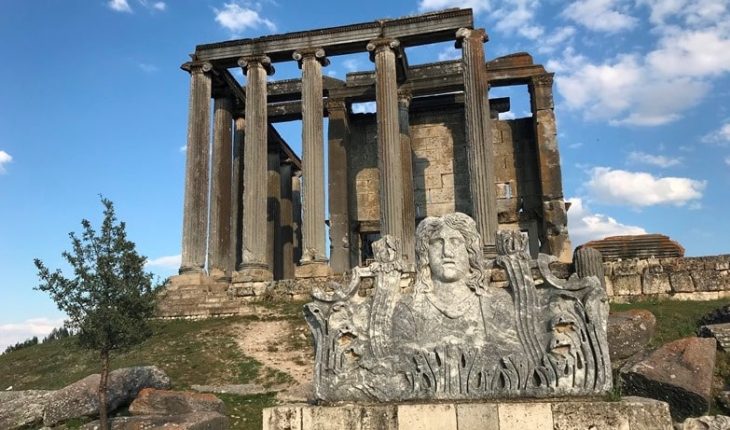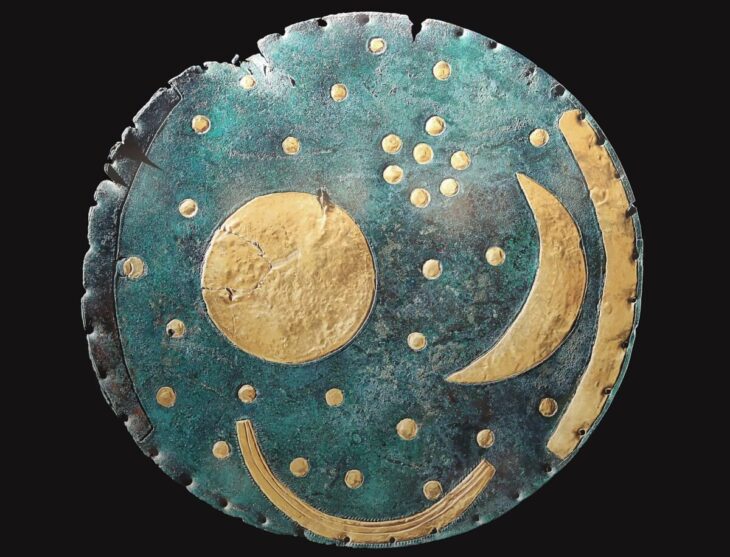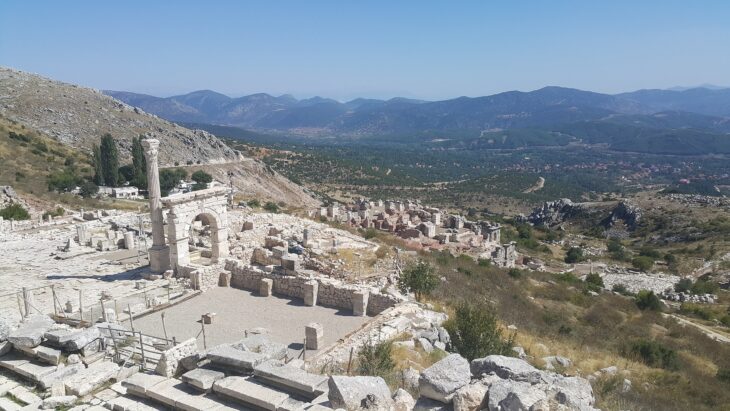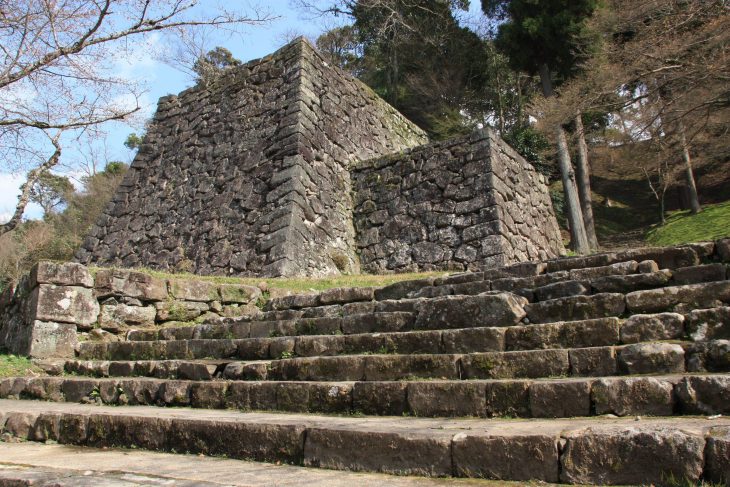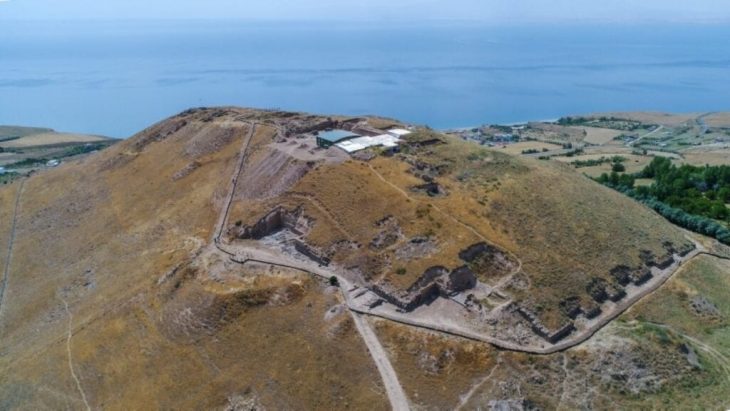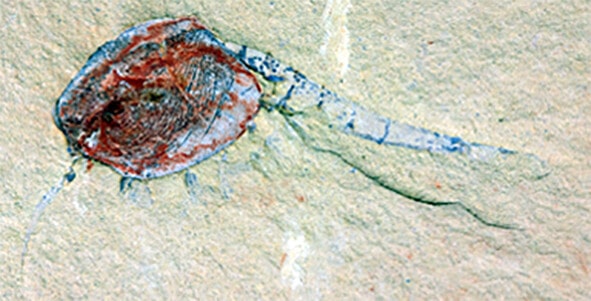A gold ring with an unusual two-faced design, likely to be from the 11th or 12th century, has been discovered buried beneath Wawel Castle, the former seat of Poland’s kings in the city of Kraków. It is the only one of its kind ever found on Polish territory.
The imagery on the ring does not align with conventional Christian symbolism typically seen in the era’s artifacts. The ring’s decoration, which includes a shield with two opposing faces, may refer to Janus, the two-faced Roman god, and indicate a high caliber of local craftsmanship.
Janus is a uniquely Roman god that does not have any Greek equivalent. Janus is portrayed with two faces. He is the Roman god of beginnings and ends, entrances and exits, change, transition, gateways, doorways, and archways.
The ring is 1.5mm thick, 4mm in diameter with a circumference of 57mm. The ring is decorated, making it extremely unusual. Only a few early medieval gold rings have been found in Poland and they are devoid of ornamentation or have simple geometric patterns.
That makes the latest find “unique”, says researcher Jerzy Trzebiński. “This is the only example in which human images (or figural ones in general) are depicted on an early medieval ring from Poland.”
📣 Our WhatsApp channel is now LIVE! Stay up-to-date with the latest news and updates, just click here to follow us on WhatsApp and never miss a thing!!

Trzebiński thinks the ring was likely a local product and may have belonged to an elite under the Piasts, Poland’s first ruling dynasty that ruled from the state’s founding in the 10th century until the 14th. The ring’s form is typical for that era in Poland.
Archaeologists discovered the item in the basement of the Danish Tower (Wieża Duńska), one of the castle’s four residential towers. King Władysław II Jagiełło ordered its construction in the late 14th to early 15th century as part of the reconstruction of an existing tower. The tower’s facade was later added in the sixteenth century.
The ring was discovered on top of the remains of a former stone structure, most likely a defensive rampart. Wawel Castle’s history dates back to the 11th century, but the hill on which it sits had long been an important seat of power.
Cover Photo: WAWEL ROYAL CASTLE

